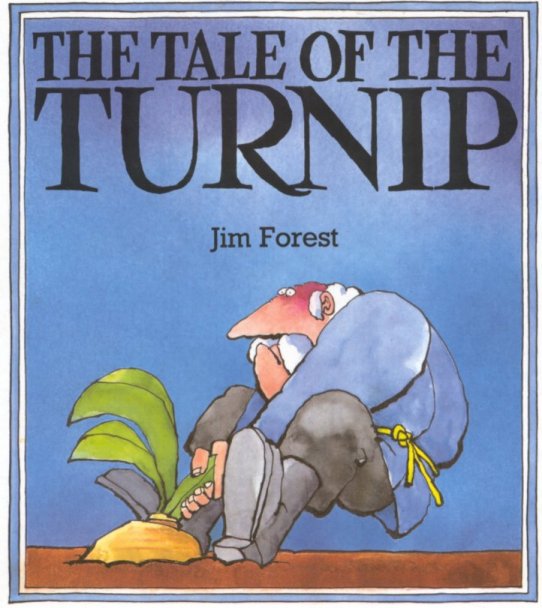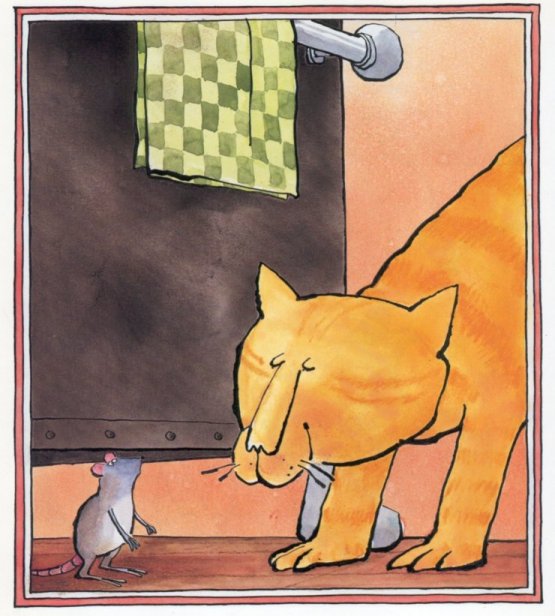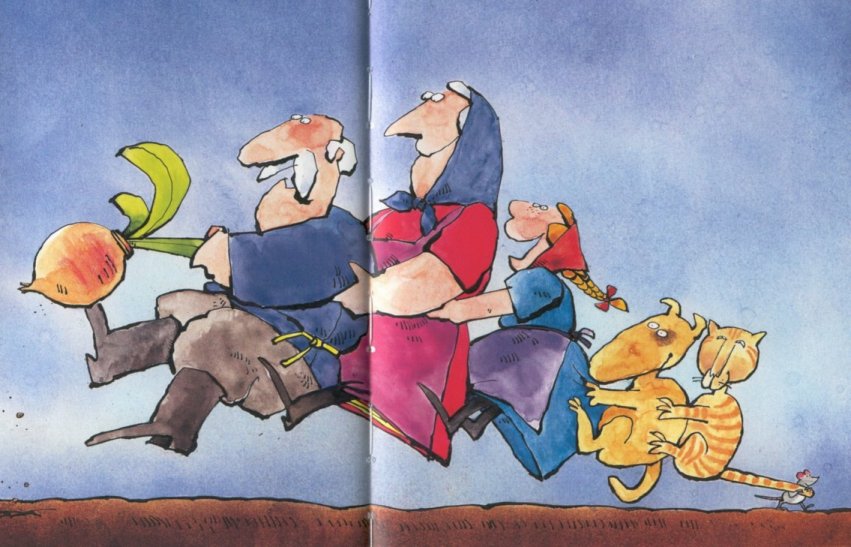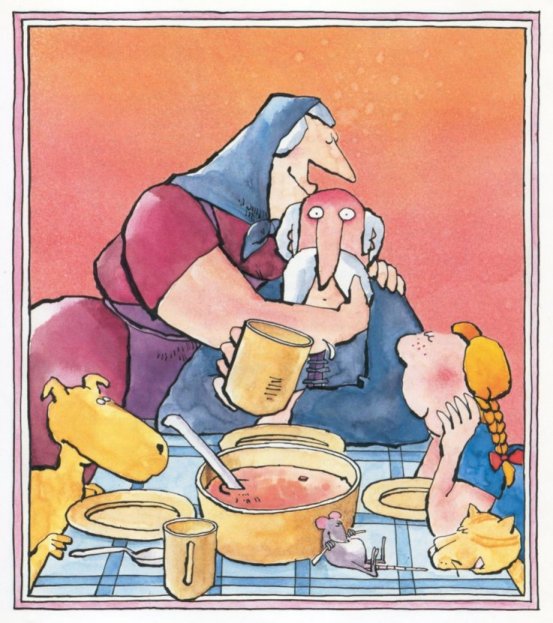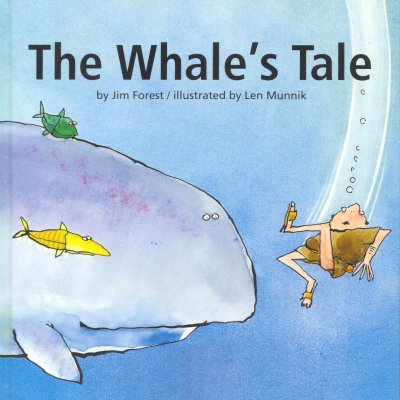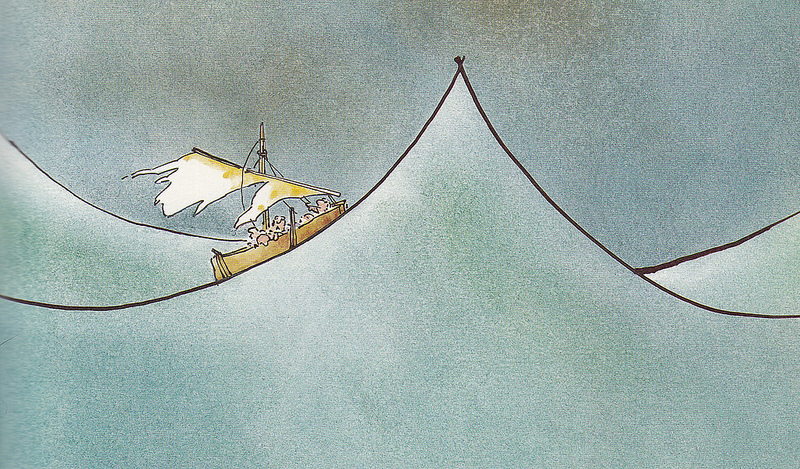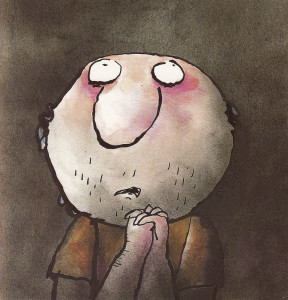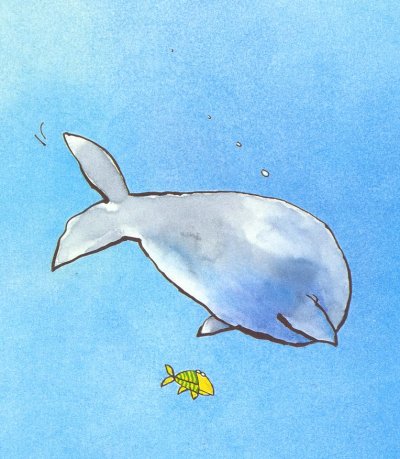by Jim Forest
“Blessed are the peacemakers, for they shall be called children of God. — Matthew 5:9
Like fish, we human beings tend to move in schools. When the drums of war are beating and the latest slogan of mass destruction is announced (“for God and country,” “the war to end all wars,” “the war to make the world safe for democracy,” “the war to defeat the axis of evil,” “the war against terrorism”), few and far between are those who, having been summoned, refuse to take up weapons.
On every side, there are those who go willingly, convinced of the war’s rightness or at least confident their government knows what it is doing and would not spend human lives for anything less than the survival of the nation. There are still others who have their doubts but avoid knowing better — they rightly sense that it’s dangerous to look beyond the slogans. There are also those who know that the war at issue is deeply flawed or even unjustified, but who go along anyway, knowing there is always a price to pay for saying no and not willing to pay that price.
For many the idea of disobedience simply doesn’t occur. There is the joy — at least the sense of security — of being in step with others and acting in unity, even if it turns out that such unity is being put to tragic or murderous uses. We’re human beings, after all, and thus — for worse as well as better — profoundly social. We like to bond with those around us — to cheer for the same teams, to see things in a similar way, to be “good citizens,” to do “what is expected of us.” Those of us who are Christians may well find ourselves urged “to do our part” even by our bishops, pastors and theologians.
And yet there are those who say no — sometimes only a few, sometimes many. It depends on the war and also how tolerant or intolerant the government is regarding conscientious objectors. Not many men refused to serve in the armies of the Third Reich — the almost certain penalty was execution. A rare kind of courage — or faithfulness — was required. In the United States, which provided the option either of unarmed service in the military or alternative civilian employment that would be of benefit to the community, tens of thousands of Americans were recognized as conscientious objectors during the Vietnam War. (However many were not recognized because they only objected to the Vietnam War rather than all wars; as a consequence, many of them were sent to prison while others migrated to Canada or other countries.)
While many conscientious objectors are opposed to war and killing in general, no matter what a particular war’s justifications may be, many other are opposed just to the war currently going on. There are also those who might in theory have fought in purely defensive wars in the past in which the violence was more limited, but who find that the methods and weapons of modern war of their nature result in the death or maiming of far more innocent people than combatants and for this reason to refuse to take part in war.
Christ’s example
The majority of conscientious objectors are Christians. While some of them approach war via conditions laid out in what is usually called the “just war” doctrine, one of whose requirements is that for a war to be regarded as just it must safeguard the lives of noncombatants, the factor of greatest importance is the teaching and example of Jesus Christ as revealed in the Gospels.
 Consider the question of war in terms of the example and teaching of Christ during the years between his baptism by John and his execution on the Cross. In which wars did Christ take part? Not one, nor did he say a single word of encouragement to those involved in the war of liberation against the Roman occupiers being fought in that period by those who were called Zealots. Did he kill anyone? Not one person. Indeed he managed to save the life of a woman who had been condemned to death. Did he harm anyone? Not a soul. Which of his followers did he commission to shed anyone’s blood? Not one follower.
Consider the question of war in terms of the example and teaching of Christ during the years between his baptism by John and his execution on the Cross. In which wars did Christ take part? Not one, nor did he say a single word of encouragement to those involved in the war of liberation against the Roman occupiers being fought in that period by those who were called Zealots. Did he kill anyone? Not one person. Indeed he managed to save the life of a woman who had been condemned to death. Did he harm anyone? Not a soul. Which of his followers did he commission to shed anyone’s blood? Not one follower.
Was Jesus a man without anger? Clearly not. In one of the few stories included in all four Gospels, we see him using a whip of chords to chase the money changers from the Temple while overturning their tables. It was a show of rage but not a threat to anyone’s life or health, unless we notice that by such a provocative action he endangered his own life.
He said that no greater love has anyone than to lay down his life for his brother. The church calendar is mainly a long list of martyrs who did exactly that. How ironic these words of Jesus are so often a text at the funerals of soldiers. Christ’s words of praise for those who lay down their lives for a brother is not a blessing to kill other brothers.
The only one of his disciples to shed blood, a brave action performed in Christ’s defense by Peter, was immediately admonished by Jesus, “Put away your sword, for whoever lives by the sword will perish by the sword.”
His last miracle before his crucifixion was to heal the wound of the man whom Peter had injured. This compassionate gesture provides a powerful example of what Jesus meant in commanding love of enemies to all those attempting to his follow him.
This raises the question: If one wishes to follow Christ, would that not include trying to be Christ-like in our response to war?
Surely the answer must be yes. Why call ourselves Christians unless we are trying to live in a more Christ-like way? In the words of the late Metropolitan Anthony of Sourozh, “We should try to live in such a way that if the Gospels were lost, they could be re-written by looking at us.”
What any attentive reader of the New Testament finds instead is that peacemaking is an essential dimension of any Christian vocation. It isn’t something optional. Christ stresses the significance of peacemaking by including it in the Beatitudes, a compact summary of the Gospels. The same is true of the Liturgy, in which peace is a condition of worship, as we are reminded every week by the first petition in the Liturgy is, “In peace let us pray to the Lord.” We are carefully warned against receiving the Body of Christ while being in a state of enmity.
The Approach of the Early Church
It is helpful to learn all we can about the early Church, in which Christ’s disarming words to Peter — “put away your sword” — were understood as being addressed to all Christians.
In the Apostolic Tradition of St. Hippolytus, one of the first bishops of Rome, written in the second century, the renunciation of killing men, women and children is a precondition of baptism:
“A soldier under authority shall not kill a man. If he is ordered to, he shall not carry out the order, nor shall he take the oath. If he is unwilling, let him be rejected. He who has the power of the sword or is a magistrate of a city who wears the purple, let him cease or be rejected. Catechumens or believers, who want to become soldiers, should be rejected, because they have despised God.” (Canon XVI: On professions)
In a criticism of Christians written by the pagan scholar Celsus in 173 AD, Christians were sharply condemned for what today would be called conscientious objection to participation in war. “If all men were to do as you,” wrote Celsus, “there would be nothing to prevent the Emperor from being left in utter solitude, and with the desertion of his forces, the Empire would fall into the hands of the most lawless barbarians.”
Defending the Christian community, the theologian Origen replied: “Christians have been taught not to defend themselves against their enemies; and because they have kept the laws that command gentleness and love of man, they have received from God that which they would not have achieved if they were permitted to make war, though they might have been quite able to do so.” (Contra Celsum 3,8)
The Christian refusal of military service, Origen argued, does not indicate indifference to social responsibility, but rather response at the spiritual and transcendent level: “The more devout the individual, the more effective he is in helping the Emperor, more so than the soldiers who go into the lines and kill all the enemy troops they can … The greatest warfare, in other words, is not with human enemies but with those spiritual forces which make men into enemies.”
In the same period St. Justin, the Great Martyr, wrote similarly: “We who were filled with war and mutual slaughter and every wickedness have each of us in all the world changed our weapons of war … swords into plows and spears into pruning hooks.” (Trypho 110)
Elsewhere St. Justin wrote, “We who formerly murdered one another now not only do not make war upon our enemies but, that we may not lie or deceive our judges, we gladly die confessing Christ.” (I Apol. 39)
“The Church,” said Clement of Alexandria, is “an army which sheds no blood.” (Protrepticus 11, 116) “In peace, not in war, we are trained.” (Paedogogus 1,12) “If you enroll as one of God’s people, heaven is your country and God your lawgiver. And what are His laws? You shall not kill, You shall love your neighbor as yourself. To him that strikes you on the one cheek, turn to him the other also.” (Protrepticus 10)
Saints who were conscientious objectors
In narratives of saints of the early Church that come down to us, some concern those who refused military service or, while in the army, refused to take part in war.
One of the most detailed concerns a young Christian named Maximilian, tried for refusing military service March 12, 295, at Mauritania in Northern Africa. On trial for his life, Maximilian told the proconsul Dion, “I cannot serve because I am a Christian…. I cannot commit a sin. I am a Christian.” “Serve, or you will die,” said the proconsul Dion. “I shall not serve,” responded Maximilian. “You may cut off my head, I will not serve this world, but only my God.” “You must serve,” said Dion, “otherwise you will die miserably.” “I shall not perish,” said Maximilian. “My name is already before the Lord. I may not serve.” Dion said, “Have regard for your youth and serve. This is what a young man should do.” “My service is for my Lord,” Maximilian replied. “I cannot serve the world. I have already told you: I am a Christian.” Proconsul Dion then pointed out, “In the sacred bodyguard of our Lords [the emperors] Diocletian and Maximian, Constantinus and Maximus, there are soldiers who are Christians, and they serve.” Maxmilian replied, “They know what is best for them. But I am a Christian and I cannot do wrong.”
It is a long transcript. Let me cut it short, only adding that the effort of the proconsul to convince Maximilian to become a soldier failed. That day Maximilian was executed with a sword. His last recorded words were, “Thank God.”
 There is also the story of one of the great missionary saints of the fourth century, Martin of Tours, born only 21 years after the execution of St. Maximilian.
There is also the story of one of the great missionary saints of the fourth century, Martin of Tours, born only 21 years after the execution of St. Maximilian.
Martin (named after Mars, the god of war) was the son of a tribune in the Imperial Horse Guard. When only ten, in the year 316, Martin was drawn to Christ thanks to a providential encounter. Despite parental opposition, he became a catechumen. Christianity was at this time no longer illegal, but was far from being the dominant religion. Five years later, Martin – still a catechumen — was obliged, as the son of a veteran officer, to join the Horse Guard himself.
It was while he was stationed is Amiens, France, that the event occurred in his life for which he is especially remembered. Passing on horseback through one of the city gates of Amiens, he noticed a freezing beggar. Martin’s heart went out to the man. Ignoring the ridicule of those witnessing the scene, he responded by cutting his officer’s cape in two, giving half to the man who was nearly naked. It is a scene represented in countless carvings, paintings and stained glass windows, especially in churches and monasteries bearing Martin’s name. That same night, Martin had a vision in which he saw Christ wearing the cape he had given the beggar. (No doubt as a catechumen he knew the Gospel words, “I was naked and you clothed me.”) Martin’s baptism followed soon afterward.
Even in modern Europe — including Holland, where I live, a country where the Reformation succeeded in getting rid of almost all saint-connected celebrations — St. Martin is remembered every year on the eve of his feast day, November 11. The tradition is for lantern-carrying children go door-to-door singing mischievous St. Martin songs in the hope that they too will be objects of a compassionate response — the gift of some candy from all who open their doors.
Another story of St. Martin is told less often, perhaps because it is more challenging.
At about the age of twenty, on the eve of a battle with the Gauls at Worms, his company was called to appear before the emperor to receive a war-bounty on the eve of battle. Refusing to accept such a reward, Martin explained: “Up to now I have served you as a soldier. Now let me serve Christ. Give the bounty to these others — they are going to fight, but I am a soldier of Christ and it is not lawful for me to fight.”
The emperor accused him of cowardice, to which Martin replied that, in the name of Christ, he was prepared to face the enemy on the following day, alone and unarmed. His superiors planned to take him up on the offer, but before they could, the invaders sued for peace, the battle never occurred, and Martin was discharged from military service. Perhaps they sensed God’s hand in such an unexpected peace.
After his discharge, Martin became a monk under the guidance of St. Hilary in Poitiers. Later in life, the much-respected monk was chosen as bishop by the clergy and people of Tours. Regarding himself as unworthy, Martin tried hard to avoid the episcopal office. He went into hiding, but the noisy geese with which he took shelter gave him away. (Poor geese! In Austria, Germany and France, many of goose are roasted on St. Martin’s feast day.)
Martin lived a long life, dying at the age of 81 in 397. He was the first confessor who had not died the death of a martyr to be venerated in the West.
The Age of Constantine
The fourth century, of course, was also the century of St. Constantine, the first Roman emperor to favor Christianity rather than regard it as a threat to the social order. During the Church’s first three centuries, Christians had repeatedly been the object of state repression. Many had been martyred — burned, beheaded, crucified, eaten by wild animals, tortured to death. Imperial persecution finally ended in the year 313 when Constantine issued the Edict of Milan. Though Constantine himself was baptized only on his deathbed and was a member of the Church only the final hours of his life, he nonetheless acted as a protector of the Church and was a person whose life, at its best moments, was clearly influenced to the Gospel. Yet not all his legacy, so far as the Church is concerned, was positive. As St. Jerome observed, “When the Church came to the princes of the world, she grew in power and wealth but diminished in virtue.”
Constantine died in the year 337. Less than half a century later, Christianity had become not just a legal religion but the official religion of the Empire. Far from being persecuted, the Christians were favored by the state. For those who sought advancement, it was all but essential to be a Christian. No longer was the Church only concerned with a kingdom not of this world. Rather it was seen as the ruler’s partner in maintaining the kingdoms of this world.
While Christian attitudes toward war very gradually began to take a new direction following Constantine, remarkably the Church still maintained a profoundly critical attitude regarding military service and participation in war.
The First Ecumenical Council was held at Nicea near Constantinople in the year 325 in the presence of Constantine. One of the canons issued by the bishops declared:
“As many as were called by grace, and displayed the first zeal, having cast aside their military belts, but afterwards returned, like dogs, to their own vomit, so that some have regained their military stations; let these, after they have passed the space of three years as hearers, be for ten years prostrators. [Hearers and prostrators are categories of penitents who can be present, like catechumens, for the Liturgy of the Word, but are barred from the Eucharistic Liturgy.] But in all these cases it is necessary to examine well into their purpose and what their repentance appears to be like. For as many as give evidence of their conversions by deeds, and not pretense, with fear, and tears, and perseverance, and good works, when they have fulfilled their appointed time as hearers, may properly communicate in prayers; and after that the bishop may determine yet more favorably concerning them. But those who take the matter with indifference, and who think the form of not entering the Church is sufficient for their conversion, must fulfil the whole time.” (Canon XII)
In the Canons of Hippolytus, written not later than 340 AD, fifteen years later, one finds a section that expands on canons from previous centuries:
“Concerning the Magistrate and the Soldier: they are not to kill anyone, even if they receive the order: they are not to wear wreaths. Whoever has authority and does not do the righteousness of the gospel is to be excluded and is not to pray with the bishop.
“Whoever has received the authority to kill, or else a soldier, they are not to kill in any case, even if they receive the order to kill. They are not to pronounce a bad word. Those who have received an honor are not to wear wreaths on their heads. Whoever is raised to the authority of prefect or to the magistracy and does not put on the righteousness of the Gospel is to be excluded from the flock and the bishop is not to pray with him.
“A Christian is not to become a soldier. A Christian must not become a soldier, unless he is compelled by a chief bearing the sword. He is not to burden himself with the sin of blood. But if he has shed blood, he is not to partake of the mysteries, unless he is purified by a punishment, tears, and wailing. He is not to come forward deceitfully but in the fear of God.” (Canons XIII-XIV)
St. Gregory of Nyssa wrote late in the fourth century:
“Scripture not only prohibits inflicting the slightest wound, but moreover all foul talk and slander (Col. 3:8; Eph. 4:31) and similar things that proceed from the incensive power of the soul; yet only against the crime of murder our fathers have imposed canonical sanctions. With regard to this crime a distinction is made between involuntary homicide and premeditated murder. As voluntary, murder is considered, first of all, when someone dares to commit this act in a premeditated manner. Secondly those are considered as voluntary murderers who during a fight, while exchanging blows, strike in some dangerous place. For once overcome by wrath and giving way to the movements of anger, during their passion they will not accept anything into their minds that may prevent evil. Therefore a killing that results from a fight is attributed to the effect of compulsion, and not considered an accident. Involuntary homicide can be recognized by the feature that someone, aiming to achieve something else, by accident inflicts such great evil. For those who wish to heal the crime of premeditated murder by repentance, a triple lapse of time is required. Three nine-year periods of penitence are imposed, with nine years in each degree of penitence…
“Involuntary homicide is considered worthy of indulgence, although not praiseworthy. I say this in order to make clear that someone who has defiled himself with murder — be it involuntarily — is considered impure through his impure deeds and the canon considers such a person unworthy of the grace of priesthood. (Canon V, The Canonical Epistle of St. Gregory, Bishop of Nyssa, to St. Letoius, Bishop of Melitene)
While details of penitential practices varied from region to region, in the sixth century, in the canons written by St. Gregory the Great, bishop of Rome at a time when the Roman Empire in the west was crumbling, the act of killing still required a long break in Eucharistic life. That break was longest for anyone guilty of murder. As St. Gregory wrote: “He that willfully commits murder, and afterwards repents, shall for twenty years remain without communicating of the Holy Sacrament. Four years he must mourn without the door of the oratory, and beg of the communicants that go in, that prayer be offered for him; then for five years he shall be admitted among the hearers, for seven years among the prostrators; for four years he shall be a co-stander with the communicants, but shall not partake of the oblation; when these years are completed, he shall partake of the Holy Sacrament.”
Penance for involuntary murder was less severe — eleven years of exclusion from communion. But killing in war also involved the least extended penance: “Our fathers did not regard killing in war as murder; yet I think it advisable for such as have been guilty of it to forbear communion three year.” (Canons XI, XIII and LVI)
Christians had once been notable — for some notorious — for their abstention from war and their condemnation of gladiatorial combat and all blood sports. By the fifth century they were found in the military in every rank.
The Just War Doctrine
It was late in the fourth century that the primitive theological foundations were laid by St. Augustine, bishop of Hippo in North Africa, for Christian participation in war. While he maintained the traditional view that the individual Christian is barred from using deadly violence in self-defense, he proposed that defending one’s community was a different matter. However Augustine insisted that under all circumstances Christ’s command that his followers must love their enemies remained in force. (Does love of enemies actually occur in battlefield conditions? Few war veterans would answer in the positive.)
Beginning in the medieval period, a more developed doctrine emerged that sought to define what the conditions were for a just war. Theologians especially associated with the development of just war theory include St. Thomas Aquinas and St. Robert Bellarmine. Under the terms of this teaching, a war could be considered just, and thus Christians laymen could participate in it, if it met certain conditions: War must be declared by the legitimate authority of the state. It must be fought for a just cause and with a just intention, not simply to satisfy national pride or to further economic or territorial gain. The methods and weapons used must not produce evils and disorders graver than the evil to be eliminated. The lives the innocent and noncombatants must be respected. The war must have a reasonable chance of success so that the good results of the war will outweigh the evil caused by it. War must be the last resort. Finally, the burden of guilt must be clearly on one side.
In any western theological text book providing any treatment of war, the reader will find a section on the just war doctrine, though it never became a dogma.
While they have many things in common, one of the differences between the Catholic and Orthodox Churches West is that the just war doctrine was never embraced by the Orthodox Church, despite the fact the Orthodox Christians have been as likely to take part in wars as their western counterparts.
The Orthodox Church never saw war as something which could, even in the case of warding off invaders, be regarded as just or good. Even in situations where there seemed no viable alternative to war, war was regarded as an evil, albeit a lesser evil, but still evil, as inevitably war involves killing and the commission of other grave sins. For this reason clergy were and still are forbidden by Church canons to be combatants in war. Even to kill another person in self-defense or by accident precludes a person from serving at the altar. Thus there are Orthodox priests who do not drive a car because of the danger of inadvertently causing someone’s death.
Fr. Stanley Harakas, long-time professor of Orthodox Theology at Holy Cross Greek Orthodox School of Theology in Massachusetts, in writing about his search through patristic sources and Byzantine military manuals for texts concerning war, notes: “I found an amazing consistency in the almost totally negative moral assessment of war coupled with an admission that war may be necessary under certain circumstances to protect the innocent and to limit even greater evils. In this framework, war may be an unavoidable alternative, but it nevertheless remains an evil. Virtually absent in the tradition is any mention of a ‘just’ war, much less a ‘good’ war. The tradition also precludes the possibility of a crusade. For the Eastern Orthodox tradition … war can be seen only as a ‘necessary evil,’ with all the difficulty and imprecision such a designation carries.” Fr. Harakas discovered what he referred to as “the stratification of pacifism” in the Church. The discipline of not killing others under any circumstances, applied to all baptized Christians in the early Church, in time came to be required only of those serving at the altar and iconographers. [“No Just War in the Fathers,” Harakas, posted on the Orthodox Peace Fellowship web site.]
Soldier saints
One might ask: If war is seen in the Orthodox Church as an innately sinful endeavor, then how come there are soldier saints on the Church calendar?
 In the early Church converts were found in every profession, including soldiers in the military. One of these was the Great Martyr George, the best known of all “soldier saints.”
In the early Church converts were found in every profession, including soldiers in the military. One of these was the Great Martyr George, the best known of all “soldier saints.”
In icons we are used to seeing St. George battling a dragon, but that image arose centuries after his death. In icons of the first millennium, George stands erect, usually dressed as a soldier, face to face with whoever is praying before the icon.
The actual George never saw a dragon. He died a martyr’s death not unlike that suffered by thousands of other Christians of his generation. The “dragon” George fought against was his own fear as he confronted the demands of his rulers to renounce his Christian faith. George, a young army officer, lived in the time of the persecutions of Diocletian and Maximian (303 to 311), when many Christians were being arrested and taken away to torturers and executioners. George had the courage to walk into a public square and shout, “All the heathen gods are devils. My God made the heavens and is the true God.” For this he was arrested, tortured and put to death. His witness is said to have led to the conversion of many and to have given renewed courage to others who were already baptized.
His legendary battle with a dragon emerged centuries later: According to the story, a dragon lived in a lake in the region of Cappadocia in Asia Minor and was worshiped by the terrified local people, who fed him their children to subdue the dragon’s rage. When it was the turn of Elizabeth, the king’s daughter, to be sacrificed and she was going toward the lake to meet her doom, St. George appeared riding a white horse. He prayed to the Father, Son and Holy Spirit, then transfixed the dragon with his lance, and afterward led the vanquished creature into the city. The wounded monster followed Elizabeth, says the Legenda Aurea of Blessed James de Voragine, “as if it had been a meek beast.” Afterward George called on the local people to be baptized.
The icon of St. George in combat with the dragon is a simple but powerful image of the struggle against evil and fear, represented by the dragon. The white horse St. George rides is a graceful creature as light as air and as fearless as his rider. The thin cross-topped lance the saint holds is not tightly grasped but rests lightly in his hand — meaning that it is the power of God, not the power of man that overcomes evil. George’s face shows not a trace of anger, hatred or anxiety. Often, in the upper left hand corner of the icon, the hand of the Savior is extended from heaven in a sign of blessing.
While there is no record of St. George having taken part in war, one finds in the church calendar saints whose life story includes combat on the battlefield.
 One of the best known of these in the Russian Orthodox Church is St. Alexander Nevsky, a prince of Novgorod. In his early life he led successful military campaigns against the Swedish army and later against the Teutonic Knights; Russians still commemorate his victory against the Teutonic Knights on the ice of the Lake Chud in 1242. In 1938, Alexander Nevsky was portrayed by the Russian film maker, Sergei Eisenstein, as an invincible warrior, an image that met Stalin’s needs at the time and is still dominant in our own day. However, when we study Russian history, we meet not only a warrior but the person Alexander Nevsky later became.
One of the best known of these in the Russian Orthodox Church is St. Alexander Nevsky, a prince of Novgorod. In his early life he led successful military campaigns against the Swedish army and later against the Teutonic Knights; Russians still commemorate his victory against the Teutonic Knights on the ice of the Lake Chud in 1242. In 1938, Alexander Nevsky was portrayed by the Russian film maker, Sergei Eisenstein, as an invincible warrior, an image that met Stalin’s needs at the time and is still dominant in our own day. However, when we study Russian history, we meet not only a warrior but the person Alexander Nevsky later became.
Exchanging his armor for the robe of a diplomat, Prince Alexander succeeded in normalizing relations with Khan Batu, saving Russia from a war it could not win and winning concessions protecting Church life. Finally he retired from both military and diplomatic roles to put on monastic robes and lead a penitential life. After he died, the people of Russia remembered him as the prince-warrior who became a peacemaker and in the end embraced the ascetic life of a monk. It was as a monk that he was shown in early icons. It was only centuries later, at the time of Czar Peter the Great, that icons of the prince-turned-monk were revised so that he was shown dressed as a warrior rather than a monk. “In this way,” noted the Russian biblical scholar, Fr. Georgi Chistyakov, “a monastic saint was made into a Russian version of Mars, the god of war, whose worship is connected with the cult of arms. The modification of the icon was pure paganism, Orthodox only in its form, a slander against the saint himself.”
Like Alexander Nevsky, many saints were soldiers at some time in their lives whose acts of courage and endurance on the battlefield still excite admiration. Nonetheless, the Church has never canonized anyone for his military skills, heroism under fire, or achievements in war.
National identity versus religious identity
To consider the question of conscientious objection requires facing the ways nationalism has shaped my view of myself and may even have damaged or silenced my conscience.
It is not possible to assign a date to the emergence of nationalism as a popular ideology. Some see it as being a major factor in the European reformation movements of the 16th and 17th centuries and the schisms that followed. The French Revolution, at the end of the 18th century, is sometimes seen as a starting point. But it is only in the 19th century that nationalism emerged with vigor in many countries and former countries that had in the past been swallowed up by their neighbors, such as Wales by England or Serbia and Greece by the Ottoman Empire. Such modern nations as Italy and Germany had been a patchwork quilt of smaller political units until the late 19th century. For many, nationalism meant the recovery of linguistic and cultural life as well at least some degree of political autonomy. In a country like the United States, nationalism was a means of creating a unifying bond between people whose roots were in other countries. This is probably the reason that the United States alone has a daily ritual in its schools of pledging allegiance to the flag, a “melting pot” exercise.
Nationalism posed, and still poises, a challenge to Christians. Am I first of all a member of the nation into which I happened to be born? Or am I first of all a member of the Body of Christ into which I was baptized? If the state orders me to act in one way and the Gospel in another, which has priority? Am I even capable of recognizing that there might be a conflict between God and country?
It can be an agonizing dilemma. The state has at its disposal extremely powerful methods of winning assent. If these fail, it has the power to punish. One also risks the censure of family, friends, neighbors, co-workers and even of fellow Christians.
We are easily influenced by the society in which we live, not only by nationalism, in the sense of unswerving devotion to nation, but also by the ideologies the nation promotes at a given time. Had you been a German in the Hitler years, you would have been under immense social pressure to greet your neighbor with a raised right hand and the words, “Heil Hitler!” Had you been a Russian in the Lenin and Stalin years, you might have succumbed to atheist propaganda and been someone destroying icons rather than reverencing them. Had you been a white South African in the apartheid years, going along with apartheid would have been much easier than opposing it. Had you been born in a slave-owning society and been among those benefiting from such cheap labor, the arguments (some of them biblical) in favor of slavery might have seemed convincing.
It becomes still harder when the Church, within a nation’s borders, seems to promote nationalism or leave it unchallenged. Orthodox Christians have a tendency to be passionately nationalistic and in too many cases are not welcoming when people of another nationality enter their churches. It’s a long-running Russian Orthodox joke that one is first of all Russian and afterward Orthodox, but not necessarily Christian. Change the national label and it can easily be made into a Greek, Serbian, Romanian or Georgian joke.
There is also the word patriotism. Patriotism and Christianity have become connected words. Sometimes we even find the national flag within our church buildings. “For God and country” is a phrase so often repeated that it sounds more like one word than four. In every war we see photos of chaplains praying with soldiers out on the battlefield as well as leading services at chapels on army bases. We can assume that almost never is love of enemies a theme of sermons (not that it is often a topic of sermons anywhere).
To Kill or Not to Kill?
Finally each of us is left with questions we alone can answer.
I can recall the long hours I spent in the chapel of my Navy base in Washington, DC, reading the New Testament and praying for God’s help as I struggled with the question of whether or not I should remain in the military. My work was only distantly of any relevance to war as such — I was part of a team of Navy meteorologists working at the headquarters of the U.S. Weather Bureau. The closest our unit had come to being linked with war was to provide weather predictions that were used in timing the Bay of Pigs invasion of Cuba.
Even so, it seemed to me the most important thing I was doing in that period of my life was volunteer work in my free time at a church-sponsored home for troubled children. The work I was doing there made me wonder if involvement in works of mercy should not be the ordinary direction in life for a Christian.
It was not so much a question of making judgments about the military. I enjoyed my work and admired many of my colleagues. It was more a question of basic direction. It was a decision being forced on me because I had gotten into trouble with in the Navy for talking part in a demonstration protesting the Bay of Pigs invasion.
I had been given some questions to answer, one of which was: “Are there any circumstances in which you would not obey a command from a senior officer?” The obvious answer for any person with a conscience, no matter what his views about war, was, “Of course there are orders I would not obey. How can anyone promise unwavering obedience without knowing what his obedience might require?” But to give such an answer meant I had no future in the Navy and might even, as had been threatened by officers of the Naval Intelligence Service, be jailed.
Part of that night’s struggle was with fear. Would my friendships be damaged? What would happen to me within the military while my request for a special discharge was pending? What would my Navy co-workers think of me? Might I become an object of derision or violence? If imprisoned, could I survive in such an environment? How would this effect my future?
Somewhere in the middle of what seemed an endless night it became obvious to me that, no matter what else happened, anything less than a truthful answer to the question before me would be not only a mistake but a sin. In the days that followed, I ended up filing for a special discharge as a conscientious objector.
I was extraordinarily fortunate. One of the senior officers in my command gave me his wholehearted support, as did several priests and various other people. I didn’t go to prison. I was given an early discharge.
That night of reading, prayer and reflection has given me a lifetime store of sympathy for anyone facing hard vocational questions, especially those where, to answer without turning a deaf ear to conscience, might involve penalties of some kind.
I have no regrets about what I did at that time and what happened as a consequence, but I also have great sympathy for those who have made very different choices. I look back with profound respect for some of the people I worked with in the years I was wearing the Navy uniform. Not often in my life have I met their equal. My colleagues included were people of conscience who were deeply serious about their Christian faith. In supporting my application for discharge, one of them sacrificed a promotion from commander to captain. On the way to his decision, at least as hard as mine, he had stayed most of a night reading a book on war and Christianity. No doubt it was a night not only of reading, but also of prayer.
Of the many questions we face, the most important, it seems to me, is how best to follow Christ in the context of the world we live in, with its temptations, its ideologies, it slogans, its idolatries, it sins, it sorrows and its wars.
Seeking assistance
Should you decide either not to refuse taking part in war as a conscientious objector or to leave the military for that reason, you are not alone.
While laws about conscientious objection vary from country to country, most countries today recognize conscientious objection as a legal right, though in some recognition is often restricted to persons who object to war in principal rather than a particular war. In the USA, for example, in past periods of conscription, conscientious objectors to a particular wars have often had to serve jail sentences for their refusal to be part of the military.
Typically, conscientious objectors are required either to perform civilian alternative service or, if he or she does not object being in uniform, assigned to noncombatant service within the military. Civilian alternative service is often performed in hospitals or other community agencies.
Non-combatant military service has most often been performed in medical units, though any assignment is possible as long as the use of weapons is not required. It should be kept in mind that non-combatant personnel share in overall military goals. According to the US Army Field Manual, “The primary duty of medical troops, as of all other troops, is to contribute their utmost to the success of the command of which they are apart.”
Many people don’t think seriously about the question of war, peace and personal responsibility until they are actually in the armed forces. For those who become conscientious objectors while in the military, in most countries there are provisions for a special discharge. Usually any chaplain can provide information about how to apply for such a discharge. Many peace organizations also provide practical assistance to conscientious objectors, both in the military and out. Various religious and secular organizations exist to help conscientious objectors. Orthodox Christians seeking assistance should contact the Orthodox Peace Fellowship.
There is no shortage of people eager to tell others what to do, be they government leaders, leaders of movements, parents or friends. But each of us stands alone with his conscience before God. Each of us must arrive at his or her own choice. Part of the decision-making process, however, ought to be consultation with people you respect and trust. While once it was difficult to find a pastor who understood or respected conscientious objectors, today it is difficult to find one who does not. The legalization of abortion in many countries has spurred the Church’s understanding of its role in the protection of life at all stages. There is today renewed interest in the witness given against bloodshed by Christians in the early Church.
With or without the support and understanding of friends and family, the questions remain intimately one’s own. What will I do? About war? For peace? With the rest of my life? How can I best follow Christ? The basic question is much larger than whether or not to be a soldier. It’s a question of basic direction. It is a question of putting everything, including citizenship and political opinions, in the context of faith.
Whatever choice we make, we must always bear in mind our responsibility to love even our enemies and to recognize Christ in the stranger. “What you have done to the least person,” Christ reminds us in the Gospel, “you have done to me.” (Matthew 25:40)
* * *
Jim Forest is secretary of the Orthodox Peace Fellowship. Once a petty officer in the U.S. Navy, he received a special discharge as a conscientious objector. An author, his books include Praying with Icons, Ladder of the Beatitudes, Confession: Doorway to Forgiveness, The Wormwood File: E-Mail from Hell, The Resurrection of the Church in Albania, Living With Wisdom: A Biography of Thomas Merton, All Is Grace: a Biography of Dorothy Day, Religion in the New Russia, and Pilgrim to the Russian Church.
* * *
 Via the web we had booked ourselves into a bed-and-breakfast southwest of the city center. As it happened, the house was on a canal that led nearly to the heart of Edinburgh, a refreshing half-hour walk that seemed to place us in the rural countryside rather that the middle of a city. So pleasant was the route that, more often than not, we walked back and forth rather than take the bus. (Walking back at night, I felt obliged to warn Nancy about the dreaded Edinburgh Ripper, who often frequents the canal, and takes special pleasure in carving up naive tourists who dare to walk this path in the dark. In reality the greatest danger we encountered were ducks and swans.)
Via the web we had booked ourselves into a bed-and-breakfast southwest of the city center. As it happened, the house was on a canal that led nearly to the heart of Edinburgh, a refreshing half-hour walk that seemed to place us in the rural countryside rather that the middle of a city. So pleasant was the route that, more often than not, we walked back and forth rather than take the bus. (Walking back at night, I felt obliged to warn Nancy about the dreaded Edinburgh Ripper, who often frequents the canal, and takes special pleasure in carving up naive tourists who dare to walk this path in the dark. In reality the greatest danger we encountered were ducks and swans.) Having read in guide books about Edinburgh’s Royal Mile, with the castle at one end and Holyrood Palace at the other, we started off by exploring this most ancient of the city’s streets, but were at first put off by the density of tourists and tourist shops. We had hoped to find an Edinburgh that was less like the center of Amsterdam, which also can barely hold all its visitors. In fact the crowds were mainly concentrated at the castle end of the Royal Mile, and neither they nor the shops that target them were unpleasant.
Having read in guide books about Edinburgh’s Royal Mile, with the castle at one end and Holyrood Palace at the other, we started off by exploring this most ancient of the city’s streets, but were at first put off by the density of tourists and tourist shops. We had hoped to find an Edinburgh that was less like the center of Amsterdam, which also can barely hold all its visitors. In fact the crowds were mainly concentrated at the castle end of the Royal Mile, and neither they nor the shops that target them were unpleasant.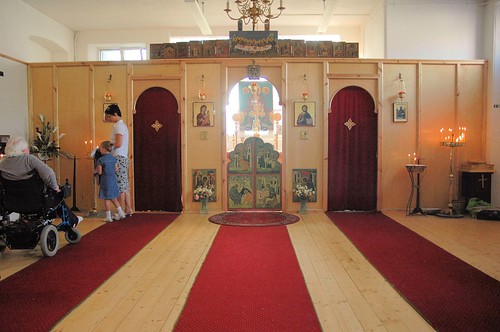 Sunday morning we walked to the Liturgy at Orthodox Church of St. Andrew on Meadow Lane. The priest is Fr John Maitland Moir, now well into his 80s yet still in good health. We had last seen him during a brief visit to Edinburgh about 15 years ago. It was a striking to see how much the parish has grown — now there are many young families.
Sunday morning we walked to the Liturgy at Orthodox Church of St. Andrew on Meadow Lane. The priest is Fr John Maitland Moir, now well into his 80s yet still in good health. We had last seen him during a brief visit to Edinburgh about 15 years ago. It was a striking to see how much the parish has grown — now there are many young families. Our good luck with the weather held up while in Oban. The first night there were treated to a sunset worthy of Tahiti — see the Oban photos — and, though less dramatic, we had another light show the second night.
Our good luck with the weather held up while in Oban. The first night there were treated to a sunset worthy of Tahiti — see the Oban photos — and, though less dramatic, we had another light show the second night.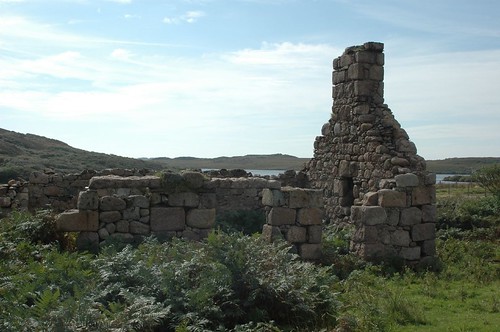 Parts of three days were spent on Iona, the small island that St. Columba landed on after sailing from Ireland in 563. Not many missionary efforts have had so profound an effect on world history. The community was eventually destroyed by Viking raids, with many martyrdoms, but lasted four hundred years before retreating back to Ireland in the tenth century. (One of the surviving monuments of the community’s early years is the Book of Kells, now in the Trinity University Library in Dublin.)
Parts of three days were spent on Iona, the small island that St. Columba landed on after sailing from Ireland in 563. Not many missionary efforts have had so profound an effect on world history. The community was eventually destroyed by Viking raids, with many martyrdoms, but lasted four hundred years before retreating back to Ireland in the tenth century. (One of the surviving monuments of the community’s early years is the Book of Kells, now in the Trinity University Library in Dublin.)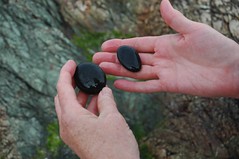 Iona is also well known for its pale green marble. Few visitors leave with island without at least one green pebble. Several beaches are carpeted with smooth stones of various sizes, among which one occasional finds a “greenie.” (See the Iona photos.)
Iona is also well known for its pale green marble. Few visitors leave with island without at least one green pebble. Several beaches are carpeted with smooth stones of various sizes, among which one occasional finds a “greenie.” (See the Iona photos.)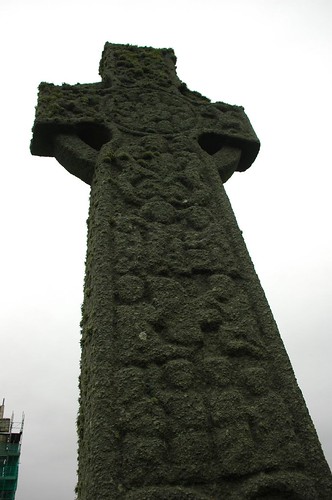 On this particular day Nancy and I took separate trips. I joined the group on the sailboat and Nancy went with four other pilgrims by car to Castle Duart on the other side of Mull, a fully restored twelfth-century castle owned by the McClean clan, filled with artefacts, reconstructed dungeons, kitchens and ballrooms, clothing and weapons, and lots of McClean family photos. The family still live there.
On this particular day Nancy and I took separate trips. I joined the group on the sailboat and Nancy went with four other pilgrims by car to Castle Duart on the other side of Mull, a fully restored twelfth-century castle owned by the McClean clan, filled with artefacts, reconstructed dungeons, kitchens and ballrooms, clothing and weapons, and lots of McClean family photos. The family still live there.
 Consider the question of war in terms of the example and teaching of Christ during the years between his baptism by John and his execution on the Cross. In which wars did Christ take part? Not one, nor did he say a single word of encouragement to those involved in the war of liberation against the Roman occupiers being fought in that period by those who were called Zealots. Did he kill anyone? Not one person. Indeed he managed to save the life of a woman who had been condemned to death. Did he harm anyone? Not a soul. Which of his followers did he commission to shed anyone’s blood? Not one follower.
Consider the question of war in terms of the example and teaching of Christ during the years between his baptism by John and his execution on the Cross. In which wars did Christ take part? Not one, nor did he say a single word of encouragement to those involved in the war of liberation against the Roman occupiers being fought in that period by those who were called Zealots. Did he kill anyone? Not one person. Indeed he managed to save the life of a woman who had been condemned to death. Did he harm anyone? Not a soul. Which of his followers did he commission to shed anyone’s blood? Not one follower. There is also the story of one of the great missionary saints of the fourth century, Martin of Tours, born only 21 years after the execution of St. Maximilian.
There is also the story of one of the great missionary saints of the fourth century, Martin of Tours, born only 21 years after the execution of St. Maximilian. In the early Church converts were found in every profession, including soldiers in the military. One of these was the Great Martyr George, the best known of all “soldier saints.”
In the early Church converts were found in every profession, including soldiers in the military. One of these was the Great Martyr George, the best known of all “soldier saints.” One of the best known of these in the Russian Orthodox Church is St. Alexander Nevsky, a prince of Novgorod. In his early life he led successful military campaigns against the Swedish army and later against the Teutonic Knights; Russians still commemorate his victory against the Teutonic Knights on the ice of the Lake Chud in 1242. In 1938, Alexander Nevsky was portrayed by the Russian film maker, Sergei Eisenstein, as an invincible warrior, an image that met Stalin’s needs at the time and is still dominant in our own day. However, when we study Russian history, we meet not only a warrior but the person Alexander Nevsky later became.
One of the best known of these in the Russian Orthodox Church is St. Alexander Nevsky, a prince of Novgorod. In his early life he led successful military campaigns against the Swedish army and later against the Teutonic Knights; Russians still commemorate his victory against the Teutonic Knights on the ice of the Lake Chud in 1242. In 1938, Alexander Nevsky was portrayed by the Russian film maker, Sergei Eisenstein, as an invincible warrior, an image that met Stalin’s needs at the time and is still dominant in our own day. However, when we study Russian history, we meet not only a warrior but the person Alexander Nevsky later became.

 Nancy and I were on Guernsey, one of the Channel Islands not far from the French coast of Normandy, from Friday afternoon through Tuesday morning. The occasion for being there was to lead a retreat on pilgrimage, but we had two days to visit friends and explore parts of the island, eight by four miles, with its beaches, bays, cliffs and forests.
Nancy and I were on Guernsey, one of the Channel Islands not far from the French coast of Normandy, from Friday afternoon through Tuesday morning. The occasion for being there was to lead a retreat on pilgrimage, but we had two days to visit friends and explore parts of the island, eight by four miles, with its beaches, bays, cliffs and forests. I am always touched by the art work of our distant ancestors but have never before come upon a life-size image of the human face from so long ago. It reminded me especially of the Pantocrator icon where one stands before an image of Christ seen face to face. It also makes me think of Adam. Despite the extreme simplicity of image, one senses an actual person,
I am always touched by the art work of our distant ancestors but have never before come upon a life-size image of the human face from so long ago. It reminded me especially of the Pantocrator icon where one stands before an image of Christ seen face to face. It also makes me think of Adam. Despite the extreme simplicity of image, one senses an actual person,